The Best Multivitamins For Toddlers (And Does Your Kid Really Need One?)
Apr 27, 2022, Updated May 26, 2025
This post contains affiliate links. Please see our disclosure policy.
When you become a parent, it can feel like you’re constantly bombarded with rules, philosophies, and recommendations for raising your kids—from baby sleep to screen time and everything in between. You’re inducted into the sometimes maddening society of parenthood, where you can find two completely contradictory answers to EVERYTHING you search in Google, and you understand your toddler better through meltdown tears than you do all those research articles and ingredient lists.
I want to clear up some of the mixed messages you get about your toddler’s nutrition and multivitamins. As a Registered Dietitian and mom of two, it’s important to me that you have all the facts—the actual, research-based facts—about what your child needs to eat in a day. Without the mom guilt, the health influencer judgment, and all those crazy-effective marketing ploys clouding your judgment.
Today, we’ll tackle the best multivitamins for toddlers—but first, does your toddler even really need a multivitamin?
Note: this post contains affiliate links. As an amazon associate I earn from qualifying purchases at no extra cost to you.
Should Toddlers Take Vitamins?
If you’ve been scrolling through social media, you’ve probably noticed several new brands of multivitamins for kids that have come on the market recently. You might be seeing these ads and wondering, Am I supposed to be giving my child a daily multivitamin?
Here’s the truth: A daily multivitamin is not necessary for most healthy children. The majority of toddlers and kids can meet the daily recommended intake of most vitamins with a balanced diet. If your child is growing on track and you offer a balanced diet, likely, they’re already getting what they need from food.
Now, notice how I said most vitamins up there? 👆 That’s because there are a few vitamins/minerals that could be of concern—ones you might want to consider supplementing your child’s diet with. But, ‘supplementing’ can happen in two ways: with a vitamin or—you guessed it!—supplement, or by adding more specific, vitamin-rich foods into their diets.
To help you understand where kids get their vitamins from, let’s check out the ingredients in multivitamins compared to the naturally-occurring vitamins found in the food your kids eat.
What’s In A Multivitamin?
Let’s take a look at a popular multivitamin, Hiya, to get an idea of what’s in it. Here’s the nutritional breakdown on their label:

First, we’ve got the fat-soluble vitamins, which are best absorbed when consumed with fat. This multivitamin has A, D, and E. But not K—we’re missing K!
Then, we have the water-soluble vitamins, which get absorbed alongside water. Hiya has vitamin C and ALL of the B vitamins: thiamin, riboflavin, folate, B12, biotin, and pantothenic acid. It also has a tiny bit of calcium, some iodine, zinc, selenium, and manganese.
This sounds great, right? I mean, these are all vitamins and minerals that your little one needs. But do they need them in the form of a (sometimes very expensive) vitamin? What if they’re already getting these vitamins in some quantities most days, just from the foods they eat?
Let’s figure that out!
Fat-Soluble Vitamins
The fat-soluble vitamins are A, D, E, and K. Fat-soluble vitamins are absorbed with fats in the body and stored mainly in the liver. These vitamins play an important role in supporting many of the body’s functions:
- Vitamin A supports vision health
- Vitamin D plays a large role in bone growth and development
- Vitamin E supports heart health and fights inflammation
- Vitamin K is an important agent in blood clotting and calcium uptake
…but they each do a few other things, too!
We generally don’t want to overdo fat-soluble vitamins in the diet, because they’re stored in the body for a lot longer than water-soluble vitamins, which simply get excreted when consumed in excess. (This is why we sometimes call unnecessary vitamins ‘expensive pee’!) If you feel pretty confident your toddler gets enough of these vitamins, they won’t need them in a multivitamin. I’ll give you examples of how to get each of these in food so you can decide if your kid is getting them or not.
The one exception here is vitamin D – this is one you often will need to supplement, but a standalone vitamin D is a better option than a multivitamin for that.
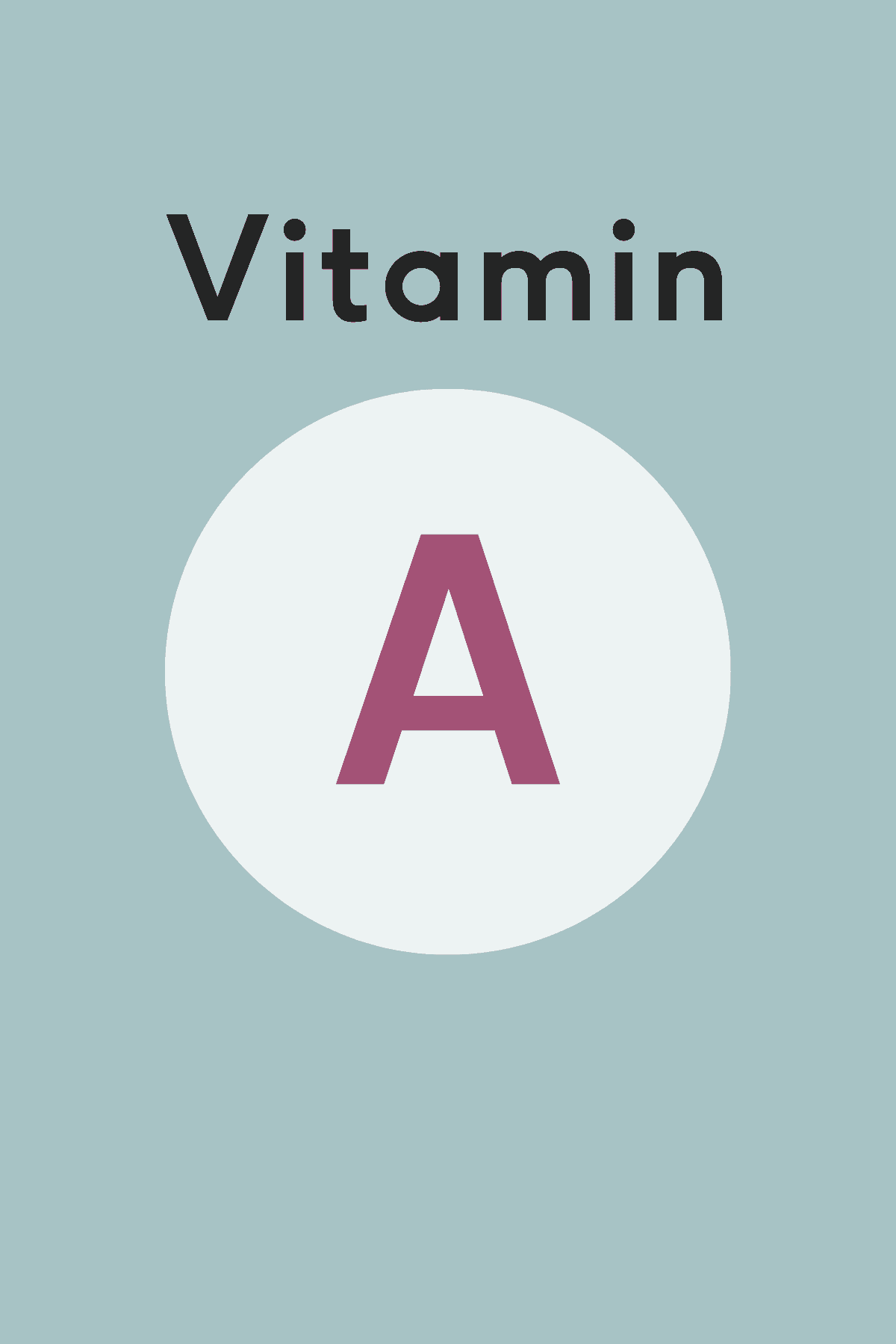
Vitamin A for Kids
The recommended daily vitamin A intake for children between the ages of 1 and 3 is 300 micrograms (mcg). For children between the ages of 4 and 8, it’s 400 mcg.
The great thing about vitamin A is that it’s found in many foods, and comes from both plant and animal sources, like salmon, butter, carrots, sweet potato, and mango. Notice how the plant-based sources of vitamin A I listed are all orange? That’s because they’re rich in beta-carotene—the compound that the body converts to vitamin A and gives foods their yellow, oranges, and red colors. Some fortified cereals can also be a significant source of vitamin A! (Fortified just means the cereal has had vitamins added into it—often vitamins that were lost during processing.)
To give you an idea of how much your child would need to eat of each of these foods to reach their daily recommended vitamin A intake:
- 1 Tbsp of Butter: 95 mcg
- 3 Oz of Salmon: 60 mcg
- ¼ cup of Sweet Potato: over 300 mcg
Bottom Line: Vitamin A Is Easy To Get
If your child eats oily fish like salmon, orange fruits and vegetables, and butter relatively often they are very likely to meet their vitamin A targets without a multivitamin! If you’re like, “Kacie, oily fish? My kids would NEVER!” That’s okay! Plant sources are good too.
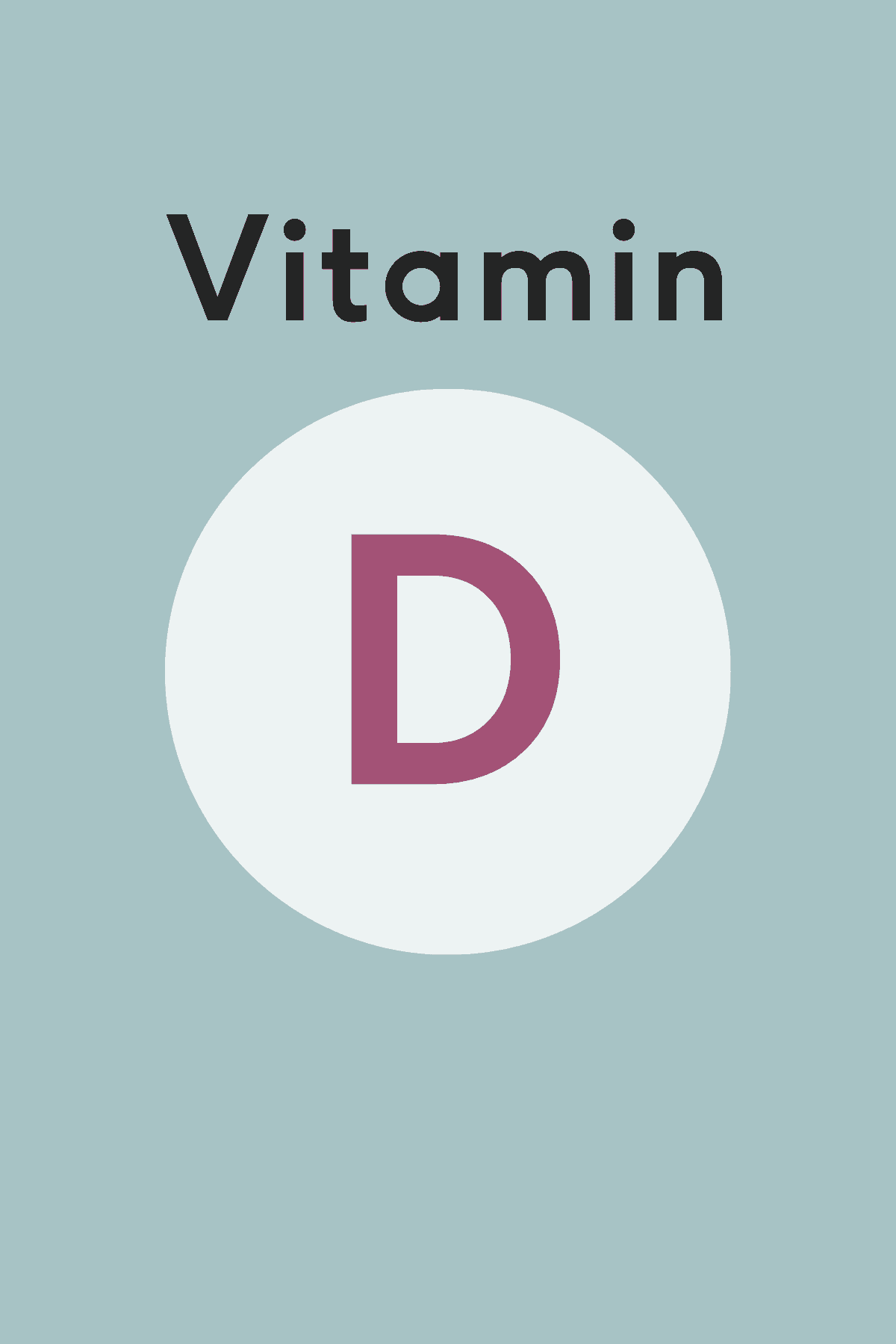
Vitamin D For Kids
Children ages 1+ need 600 IU (International Units) of vitamin D per day. That’s equivalent to 15 mcg.
Vitamin D can be one of the trickier ones to get into the diet because very few foods contain a substantial amount of it. And, a lack of vitamin D can lead to bone growth and development problems, like rickets. That’s why vitamin D is one of the most commonly recommended supplements for babies and children!
Natural Sources of Vitamin D
Fatty fish like tuna and salmon contain some vitamin D. So do mushrooms and fortified foods like milk, orange juice, and cereals.
- 3 Oz of Salmon: 14 mcg
- 1 Cup of Fortified Milk: 3 mcg
- ½ Cup of White Mushrooms: 9 mcg
As a bonus, vitamin D is the sunshine vitamin. Our bodies soak up vitamin D from the sun. Sun exposure without sunscreen (even for 10-15 minutes) can give kids a healthy vitamin D boost. But of course we need to weigh the risk of unprotected sun exposure as well. And the amount the body absorbs from the sun depends on the time of the year, the time of day, and the lightness/darkness of skin color.
My personal opinion is to always apply sunscreen – especially since there are wonderful vitamin D supplements that can fill the gap.
Bottom Line: Consider Supplementing Vitamin D
Yes, you can meet vitamin D needs with foods—and the sun. But, since few foods contain ample amounts (and it’s unlikely your toddler is eating 3 ounces of salmon each day), it’s a good idea to consider supplementing their diet.
Related: Best Vitamin D Drops: A Dietitian’s Top Picks
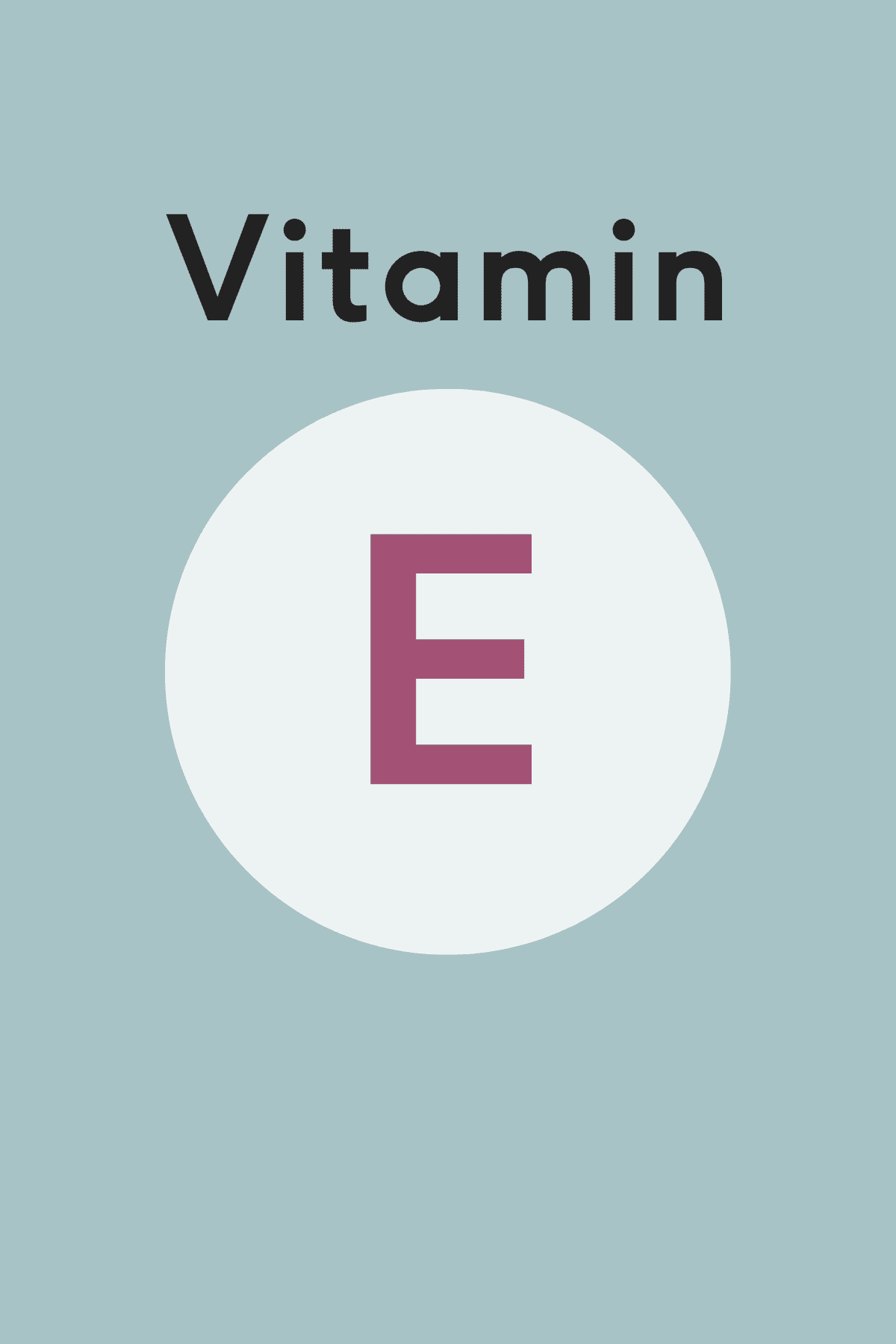
Vitamin E for Kids
Children between the ages of 1 and 3 need 6 milligrams (mg) of vitamin E per day. Kids between 4 and 8 need 7 mg.
Vitamin E acts as an antioxidant in the body and supports heart health and immune function. It’s important and a vitamin we want, but most of us—including toddlers—have no trouble meeting our vitamin E daily needs through food.
Natural Sources of Vitamin E
Sources of vitamin E in the diet include nuts and seeds, avocado, some oils (think olive, sunflower, and avocado), fish, and dark leafy greens. Fun fact: when I was in graduate school and memorizing which foods were high in each vitamin, my trick for vitamin E was to say, “eeeee for nuts and seeeeeds.” Lol!
- 1/4 Cup of Sunflower Seeds: 11 mg
- 1/4 Cup of Almonds: 6 mg
- Half an Avocado: 2.5 mg
When it comes to getting vitamin E, nuts and seeds are the real MVP! But, nuts and some seeds are choking hazards for toddlers. Try serving sun butter, nut butter, or even ground seeds (I love ground walnuts mixed into oatmeal) to check that vitamin E box while keeping everyone safe!
Bottom Line: Vitamin E is Easy To Get
Offer nuts, seeds, avocado, fish, or throw leafy greens into a smoothie once a day, and your child will be all set.

Vitamin K for Kids
Children between the ages of 1 and 3 years need 30 micrograms (mcg) of vitamin K. Children between 4 and 8 need 55 mcg.
Natural Sources of Vitamin K
As I noted above, the Hiya vitamin we profiled above didn’t have vitamin K. Thankfully, tons of foods do! Leafy greens like kale and spinach, plus other veggies like broccoli, Brussels sprouts, and cauliflower all have it. Certain animal-based sources like eggs, meat, and fish have vitamin K. Some cereals are fortified with small amounts of it, too!
- ½ cup of Broccoli or Brussels Sprouts: 110 mcg
- Half of an avocado: 20 mcg
Bottom Line: Vitamin K is Pretty Easy To Get
If your toddler will eat green things, blueberries, or chicken, they are probably all set. If not, you may want to consider supplementing their diet with either a vitamin or by adding in more foods with vitamin K in them specifically.
Water-Soluble Vitamins
Next up, we’ve got the water-soluble vitamins. Vitamin C and the B vitamins all fall into this category because they dissolve in water and are readily available for tissue use in the body—compared to fat-soluble vitamins which the body uses best if they’re consumed with fat!
If water-soluble vitamins are consumed in excess, meaning you get too much of them, they’re also easily excreted. That means your body can get rid of any extras without a big risk of toxicity.
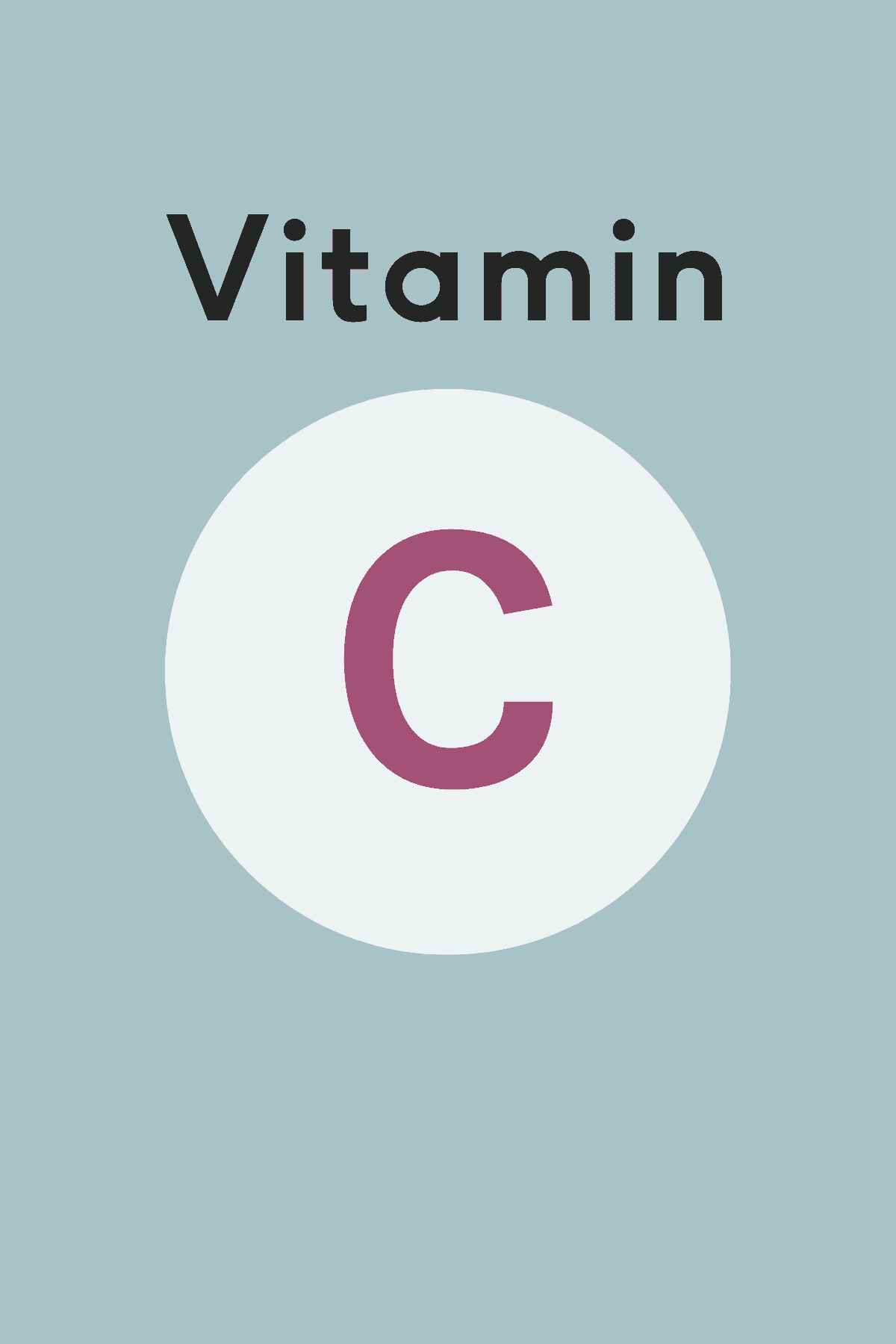
Vitamin C for Kids
Children between the ages of 1 and 3 need about 15 milligrams (mg) of vitamin C each day. For kids between 4 and 8, that number jumps to 25 mg.
Vitamin C is a powerful little antioxidant that supports healthy immune function and also plays a role in tissue and bone health. So it’s one we wanna get! (They all are.) But it’s already readily available in many foods.
Natural Sources of Vitamin C
Citrus fruits, tomatoes, bell peppers, potatoes, broccoli, strawberry, kiwi, and a variety of other whole foods all contain vitamin C.
1 Cup of Bell Pepper: 190 mg
1 Cup of Strawberries: 98 mg per cup
1 Cup of Kiwi: 167 mg
1 Cup of Broccoli: 81 mg
Bottom Line: Vitamin C is Easy To Get
It’s easy to make sure your toddler’s getting enough vitamin C in the day—if they’re eating a relatively balanced diet. I recommend serving fruits and veggies on rotation, so they get different vitamins every few days. This will help them easily meet their vitamin C needs! And if they’re not big on eating their fruits and veggies, a glass of orange juice will also do the trick with vitamin C.
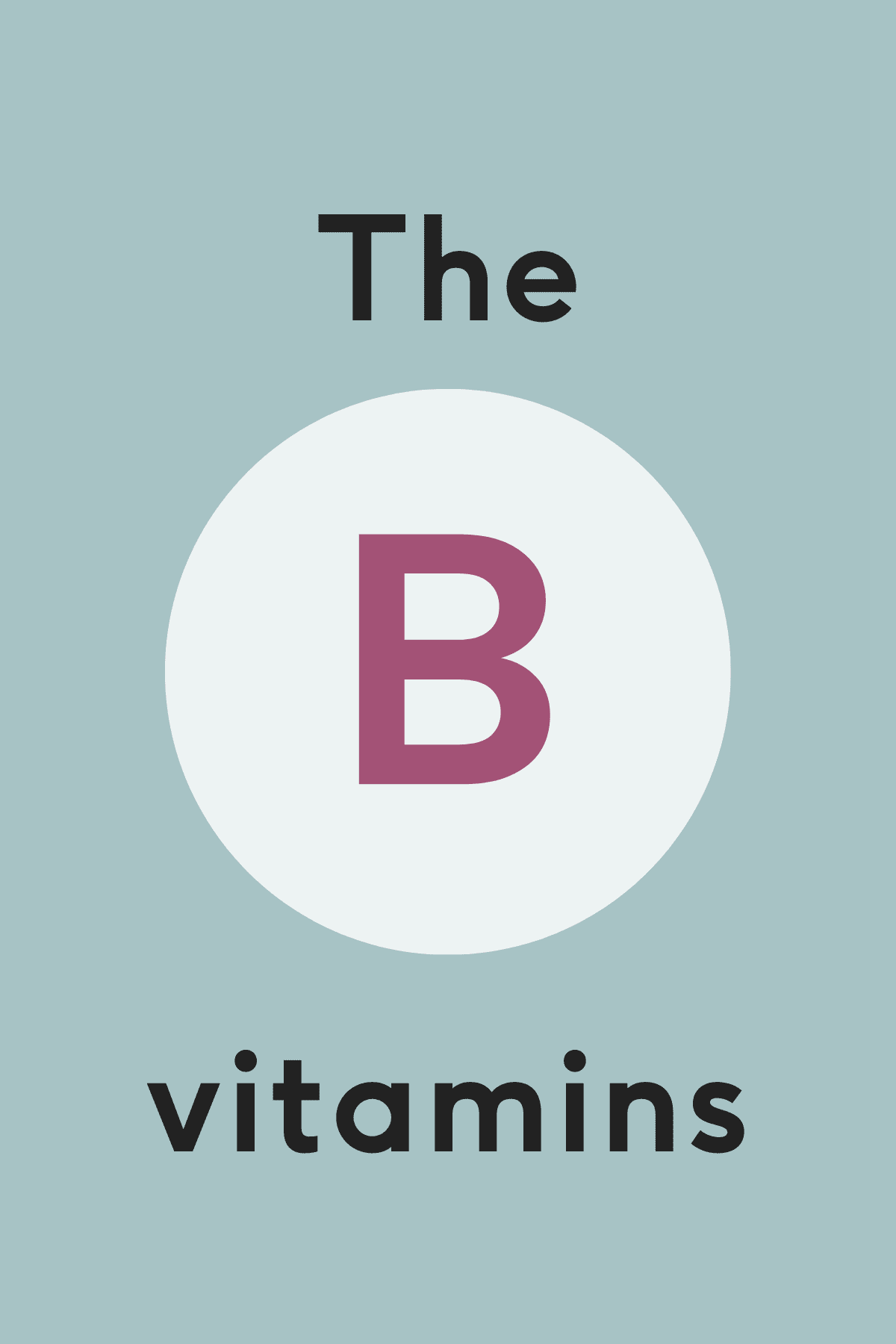
B Vitamins for Kids
According to the National Institute of Health, the daily requirements for each B vitamin are as follows:
Children Ages 1-3
- Thiamin: 0.5 milligrams
- Niacin: 6 milligrams
- Riboflavin: 0.5 milligrams
- Folate: 150 micrograms
- B6: 0.5 milligrams
- B12: 0.9 micrograms
- Biotin: 8 micrograms
- Pantothenic Acid: 2 milligrams
Children Ages 4-8
- Thiamin: 0.6 milligrams
- Niacin: 8 milligrams
- Riboflavin: 0.6 milligrams
- Folate: 200 micrograms
- B6: 0.6 milligrams
- B12: 1.2 micrograms
- Biotin: 12 micrograms
- Pantothenic Acid: 3 milligrams
Natural Sources of B Vitamins
There are a lot of foods that either contain or are fortified with B vitamins. Salmon, eggs, legumes, milk, whole grains, and some fruits and vegetables, like citrus fruits and broccoli all have them. They can be added into breads and cereals sometimes, too. (Thiamin, niacin, and riboflavin are added back to flour after the milling process.) So overall, they’re pretty easy to get with diet alone.
There’s one big exception here though, and that’s for vegans! Some of the foods with the highest concentrations of B12 in them come from animal sources, so if you or your toddler don’t eat meat OR animal products, you might want to supplement it. Here is an option – just check with the pediatrician on appropriate dosing.
Bottom Line: B Vitamins Are Easy To Get Unless Your Toddler is Vegan!
Many of the foods that children consume will have some combination if not most of these B vitamins, but some of the best food sources come from animal products. If your toddler doesn’t eat meat, eggs, and dairy, consider supplementing their diet with B vitamins!
Calcium, Iron & Other Minerals
There are a handful of other vitamins and minerals that kids need, and I want to touch on a few of the most important ones here. The Hiya vitamin we’re picking on here is low in calcium. And, it doesn’t contain iron. These two minerals are super important for kids’ growth and development, but are not commonly found in high amounts in multivitamins. (This is because a substantial amount of calcium would make the vitamin too large to swallow. For iron, it’s often excluded because it doesn’t taste good!)
The Hiya vitamin does however contain copper, manganese, and iodine, which are also important. But, these minerals are also easy to get from food (they’re found in meats, fruits, and vegetables) and deficiencies in them are rare. Most salt is also fortified with iodine, so while we recommend limiting sodium intake for young kiddos, at least you know any table salt they are getting has been fortified. And, many processed products that you buy will contain iodized salt as well.
However, families following a specific or limited diet such as the paleo diet should choose iodized salt over a natural sea salt that is not iodized. While it’s great to prioritize home cooked meals that are plant-based and not highly processed, iodine is one thing you might miss out on.
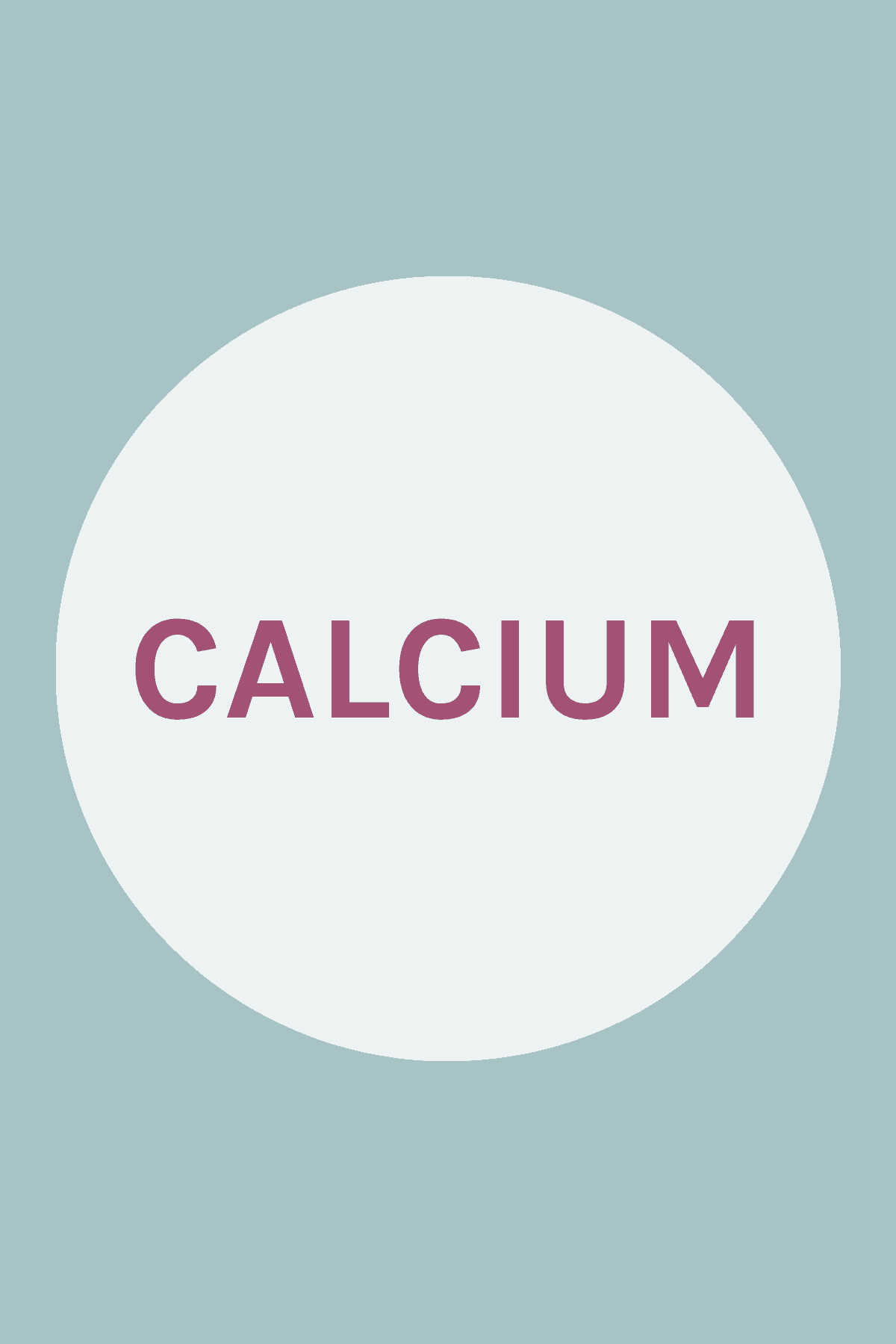
Calcium for Kids
Children between the ages of 1 and 3 years old need about 700 mg of calcium a day. Kids between 4 and 8 need around 1000 mg. We know calcium helps build strong bones, but it also plays a role in maintaining heart and muscle health. So, yay, calcium!
Natural Sources of Calcium
Calcium is present in dairy products like cheese, yogurt, and milk. You probably already know this from taking in all those catchy milk ads as a kid or teen, right?! Offering your toddler 2 to 3 servings of these dairy products daily will help them reach calcium goals.
Toddler doesn’t drink cow’s milk or eat dairy products? No worries! Fortified foods like cereal, orange juice, and soy milk have calcium in them, too!
- 1 Cup of Fortified Orange Juice: 350 mg
- 1 Cup of Fortified Soy Milk: 60 mg
- Regular Cheerios: 130 mg/serving
Bottom Line: Calcium Is Easy To Get
With a diet that includes dairy products or other fortified items like juice, breads, and fortified non-dairy milks, the calcium mark should be easy to reach.
HOWEVER – calcium is quite important and if your child doesn’t consume these foods regularly, a supplement may be needed. Discuss with their pediatrician for specific recommendations. This is the calcium supplement I like.

Iron for Kids
Children between the ages of 1 and 3 need 7 mg of iron per day, and kids aged 4 through 8 need 10 mg.
This isn’t a high number, so you’d think iron is no biggie. But iron deficiency is one of the more common deficiencies in children, and it can inhibit growth and development. So, turns out it’s kind of a biggie!
There are two types of iron: heme and non-heme. Heme iron is more easily absorbed by the body. It’s found mostly in animal products. Non-heme iron comes from plant sources. It’s not as readily available to the body as heme iron is, but it’s still a great source of iron in the diet.
Natural Sources of Iron
Heme iron sources include red meat, chicken, and turkey. Non-heme iron sources include kidney beans, lentils, and tofu.
- 1/4 Cup Beans: 1.3 mg
- 1/4 Cup Lentils: 1.6 mg
- ½ Cup of Tofu: 1.8 mg
- 1 oz Red Meat: 0.8 mg
- 1 oz Chicken: 0.4 mg
- 1 oz Turkey: 0.3 mg
Related: The Best Sources of Iron for Toddlers
Feeding Tip: Pair iron-rich foods with vitamin C! This helps the body better absorb the iron, which allows it to increase its iron stores.
Iron and protein are also very closely linked nutritionally. If you’re curious about how much protein (and iron) your toddler needs, check out episode #38 of the Mama Knows Nutrition podcast.

Finally, I recommend limiting milk consumption to less than 24 ounces each day for your toddler. Because overconsuming milk can cause iron deficiency issues and crowd out other nutrients they need! Questions about milk? Get answers in my blog post on milk for toddlers.
So, Should I Give My Toddler a Multivitamin?
In short? You probably don’t need to unless they have very picky eating habits and do not eat fortified foods (like Cheerios). Most children can meet their recommended daily intakes of the vitamins and minerals present in multivitamins with real food alone. There’s nothing wrong with a vitamin or a supplement, but I prefer a food-first approach since most of these nutrients can be easily found in the diet. Check in with your child’s doctor if you are concerned – but also know that many pediatricians have limited nutrition knowledge. So if they don’t seem too savvy with nutrition – reach out to a dietitian instead.
Multivitamin Benefits for Toddlers
There are a few vitamins and minerals to keep an eye on that can be a little trickier to meet with foods. Vitamin D, iron, calcium, and vitamin B12 (for those who follow a vegan diet or just happen to eat very little meat and animal products) all fall into this category.
They’re also convenient and a nice way to just “make sure” they’re getting what they need—but remember, they’re expensive too, and since your child is not likely to be deficient in most vitamins and minerals, a lot of the money you spend is likely getting flushed or just not fully utilized by their bodies.
They don’t get an extra health benefit when they take more than they need.
So if you’ve thought, “well shouldn’t EXTRA on top of the foods they eat be a good thing?” Remember, more is not always better! And that’s the case when it comes to exceeding their daily needs for vitamins and minerals.
Overall, a balanced diet will cover most of your toddler’s nutritional needs!
Multivitamins for Toddlers
If you do want to throw in a multivitamin to cover any nutritional gaps in your toddlers’s diet, here a few ones I trust:
Smarty Pants kids gummy vitamins
Llama Naturals gummy vitamins
Mary Ruth’s liquid morning multivitamin
Renzo’s picky eater multivitamin
It’s important to me that supplements are third party tested (to ensure that they contain what they say they contain), have low or no added sugar, and have an appropriate dosage for young children.
One Supplement I Do Recommend? Probiotics!
Probiotics are great for tiny tummies and can help keep kids from getting sick so dang much! Take the extra step in keeping them healthy by checking out my deep dive into the research on probiotics!















Hi! I read the article and really love it. I appreciate the information. I am still wondering what the best multivitamin is that you recommend in situations when one is needed. Thank you!
Hi, your article’s title is extremely misleading. I was expecting to receive a recommendation for a multivitamin product. Instead I got a list of goods that my child should eat to get necessary nutrition. Basically, you are saying – give your child a variety of foods and you should be fine. Such an interesting and new idea! Well, guess what – not all kids want to eat salmon, mushrooms, and broccoli, so your advice is educational but useless. Thanks…
Thanks for sharing. We love hiya so it’s good to see when others agree.
Since the article is titled “The Best Multivitamins For Toddlers (And Does Your Kid Really Need One?)”, it would be nice if you actually suggested a multivitamin, otherwise the title is click bait. I have a child who is extremely picky and needs a multivitamin, so I was hoping this would help..
Thank you for the feedback! I’m sorry you didn’t find what you were looking for. There are a few different supplement recommendations throughout the article, and a free probiotic guide at the end.
I have a extremely picky eater and I would for sure give her multivitamins and anything that can help her development because she barely eat, Which is the best multivitamin you recommend ? My child is 2 years old , thank you